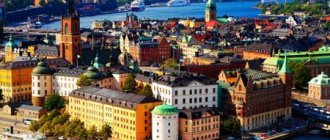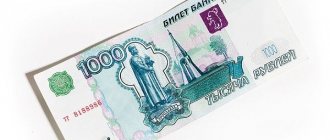The standard of living and financial well-being in Norway is recognized as one of the most favorable in the world. In the sixties, oil and gas fields were discovered in this country, due to which the social security of citizens increased.
In particular, decent conditions are created for older people when they receive government support. You will learn about how a pension is formed in Norway in 2020 and the average size of payments in this article.
Features of pension provision in the country
In Norway, the general retirement age is 67 years, regardless of gender. Many people are interested in how many pensioners there are in Norway. In relation to the main population, their number is at least 24%, which puts a serious burden on the state.
Payments include basic, additional or special pension. Supplements for spouses and minor children are possible. But each case is considered individually, since available income is taken into account. The level of payments depends entirely on marital status. For those who are married, the amount of payments depends on the spouse's pension. The main criteria are established:
- If a citizen has completed a 3-year insurance period between the ages of 16 and 66, a basic payment is provided. It does not take into account previous income and payments made.
- The full basic benefit is provided for those who have completed 40 years of coverage.
- If the hours worked are less than 40 years, the benefit amount is reduced proportionally.
The minimum pension in Norway in 2020 is NOK 93,634 thousand per year or EUR 9,873. If a pensioner has a dependent spouse who is not of retirement age, a supplement of 50% is provided. If both spouses are pensioners, the basic pension for each of them is 85%. If there is a minor child, the premium is up to 40%.
All allowances are provided based on available income. So, if there is a dependent child and there is no other source of income, a 40% increase is provided. If, in addition to the pension, there is other income, its size is taken into account.
State pension in Norway
In Norway, it is customary to work quite long hours and go on a well-deserved rest late. The retirement age in Norway for men starts at 67, the same as for women. In this case, periods worked in the territory of the European Union are counted if at least 1 year was worked in Norway itself. Pension experience from other countries is not taken into account.
When providing a special pension, the level of previous wages is taken into account. It is counted in the form of points and becomes a significant addition to the basic payments. The special pension is calculated for the last 20 years of work. Previously, it was possible to select the best years with the highest salaries. Today this practice has been abolished.
If annual income exceeds the average salary by 12 times, a special pension is not provided. It is believed that a person is too rich and will be able to provide for himself. If the pension is less than the subsistence level, additional benefits appear. One of the most common is the absence of income tax.
More to read:
What is the average pension in Belarus?
What is the retirement age in Japan for women and men?
Retirement age in Norway
You have to work in the country for quite a long time if a citizen wants to receive maximum payments. The retirement age in Norway for women starts at 67 years old. It is the same as for the stronger half. But by agreement with the employer, the mark is reduced to 62 years.
A high standard of living is ensured by many years of work and the ability to save the money you earn. In addition, a significant monthly pension in Norway is provided in rubles - 111,400.
Pensioners here are treated as those who built a country with a strong economy. Therefore, they can get good security, the opportunity to travel around the world and lead a comfortable life.
Average pension by country
| № | State | National currency (Ticker) | Average pension in $, 2018-2020 | |
| 1 | Austria | Euro (EUR) | ECB | 1540 |
| 2 | Belgium | 1280 | ||
| 3 | Germany | 849 | ||
| 4 | Greece | 768 | ||
| 5 | Ireland | 1178 | ||
| 6 | Spain | 1099 | ||
| 7 | Italy | 1320 | ||
| 8 | Cyprus | 815 | ||
| 9 | Latvia | 304 | ||
| 10 | Lithuania | 408 | ||
| 11 | Luxembourg | 3350 | ||
| 12 | Malta | 600 | ||
| 13 | Netherlands | 1418 | ||
| 14 | Portugal | 600 | ||
| 15 | Slovakia | 502 | ||
| 16 | Slovenia | 750 | ||
| 17 | Finland | 1780 | ||
| 18 | France | 1090 | ||
| 19 | Montenegro | 320 | ||
| 20 | Estonia | 544 | ||
| 21 | Albania | Albanian Lek (ALL) | Bank of Albania | 164 |
| 22 | Belarus | Belarusian ruble (BYN) | NBB | 199 |
| 23 | Bulgaria | Bulgarian Lev (BGN) | BNB | 251 |
| 24 | Great Britain | pound sterling (GBP) | Bank of England | 685 |
| 25 | Hungary | Hungarian Forint (HUF) | National Library of Hungary | 438 |
| 26 | Denmark | Danish krone (DKK) | National Library of Denmark | 3087 |
| 27 | Iceland | Icelandic krona (ISK) | Central Bank of Iceland | 1550 |
| 28 | Moldova | Moldovan Leu (MDL) | National Library of Moldova | 106 |
| 29 | Norway | Norwegian krone (NOK) | Norwegian bank | 1584 |
| 30 | Poland | Polish zloty (PLN) | National Library of Poland | 538 |
| 31 | Romania | Romanian leu (RON) | National Library of Romania | 190 |
| 32 | Russia | Russian ruble RUB | Bank of Russia | 220 |
| 33 | Ukraine | Hryvnia (UAH) | NBU | 124 |
| 34 | Czech | Czech crown (CZK) | National Library of the Czech Republic | 460 |
| 35 | Croatia | Croatian Kuna (HRK) | Croatian NB | 365 |
| 36 | Sweden | Swedish krona (SEK) | Bank of Sweden | 1865 |
| 37 | Switzerland | Swiss franc (CHF) | National Library of Switzerland | 2046 |
| Oceania | ||||
| 38 | Australia | Australian dollar (AUD) | RB Australia | 327 |
| 39 | New Zealand | New Zealand dollar (NZD) | RB NZ | 385 |
| Asia | ||||
| 40 | Azerbaijan | Azerbaijani manat (AZN) | Central Bank of Azerbaijan | 176 |
| 41 | Armenia | Armenian dram (AMD) | Central Bank of Armenia | 84 |
| 42 | Vietnam | Vietnamese dong (VND) | GB of Vietnam | 165 |
| 43 | Hong Kong | Hong Kong dollar (HKD) | Hong Kong parole | 315 |
| 44 | Georgia | Lari (GEL) | National Library of Georgia | 75 |
| 45 | Israel | Shekel (ILS) | Bank of Israel | 1532 |
| 46 | India | Indian Rupee (INR) | RB India | 30 |
| 47 | Indonesia | Indonesian Rupiah (IDR) | Bank Indonesia | 140 |
| 48 | Iraq | Iraqi Dinar (IQD) | Central Bank of Iraq | 80 |
| 49 | Iran | Iranian rial (IRR) | Central Bank of Iran | 191 |
| 50 | Kazakhstan | Tenge (KZT) | NB RK | 212 |
| 51 | Kyrgyzstan | Som (KGS) | NB KR | 69 |
| 52 | China | Chinese Yuan (CNY) | National Bank of China | 170 |
| 53 | Kuwait | Kuwaiti Dinar (KWD) | Central Bank of Kuwait | 3000 |
| 54 | Malaysia | Malaysian ringgit (MYR) | BNM | n.d. |
| 55 | UAE | UAE Dirham (AED) | Central Bank of the UAE | 2776 |
| 56 | Pakistan | Pakistani Rupee (PKR) | GB of Pakistan | n.d. |
| 57 | The Republic of Korea | South Korean won (KRW) | Bank of South Korea | 753 |
| 58 | Saudi Arabia | Saudi Riyal (SAR) | ADO SA | 2500 |
| 59 | Singapore | Singapore dollar (SGD) | DKUS | 431 |
| 60 | Tajikistan | Somoni (TJS) | National Library of Tajikistan | 29 |
| 61 | Thailand | Thai baht (THB) | Bank of Thailand | 225 |
| 62 | Turkmenistan | New Turkmen manat (TMT) | Central Bank of Turkmenistan | 140 |
| 63 | Türkiye | Turkish lira (TRY) | Central Bank of TR | 1329 |
| 64 | Uzbekistan | Uzbek sum (UZS) | Central Bank of the Republic of Uzbekistan | 63 |
| 65 | Philippines | Philippine Peso (PHP) | Central Bank of the Philippines | 30 |
| 66 | Sri Lanka | Sri Lankan Rupee (LKR) | CB SHL | n.d. |
| 67 | Japan | Japanese Yen (JPY) | Bank of Japan | 1700 |
| North America | ||||
| 68 | Dominican Republic | Dominican Peso (DOP) | Central Bank of the DR | n.d. |
| 69 | Canada | Canadian dollar (CAD) | Bank of Canada | 505 |
| 70 | Cuba | Cuban Peso (CUP) | Central Bank of Cuba | 4 |
| 71 | Mexico | Mexican Peso (MXN) | Bank of Mexico | n.d. |
| 72 | Panama | Balboa (PAB) | NB of Panama | n.d. |
| 73 | USA | US dollar (USD) | Fed | 1503 |
| South America | ||||
| 74 | Argentina | Argentine Peso (ARS) | Central Bank of Azerbaijan | 400 |
| 75 | Brazil | Brazilian real (BRL) | Central Bank of Brazil | 278 |
| 76 | Chile | Chilean Peso (CLP) | Central Bank of Chile | 198 |
| Africa | ||||
| 77 | Algeria | Algerian Dinar (DZD) | Bank of Algiers | n.d. |
| 78 | Egypt | Egyptian pound (EGP) | Central Bank of Egypt | 50 |
| 79 | Morocco | Moroccan Dirham (MAD) | Bank of Morocco | n.d. |
| 80 | Nigeria | Naira (NGN) | Central Bank of Nigeria | 20 |
| 81 | Tunisia | Tunisian Dinar (TND) | Central Bank of Tunisia | 150 |
| 82 | South Africa | South African rand (ZAR) | SARB | 70 |
Note: Please treat this table as a general guide as...
- In some countries (Uzbekistan, Tajikistan, Turkmenistan, etc.), the rate of hard currencies on the “black market” is much higher than the official rate of their Central Banks, so the size of the pension, calculated in the equivalent of the official rate, is in reality noticeably lower;
- In some countries, only certain categories of civil servants receive pensions, for example, in Iraq, and the rest of the older generation is forced to work until death or financial care for them falls on the shoulders of children, grandchildren and other relatives;
- In some countries, there is a hybrid pension system - part of the pension is paid by the state, part of the people receive from private pension funds (the more they contributed to the fund during work, the higher the payment, while the state pension, as a rule, is simply tied as a percentage to the actual salary ).
Average payout in Norway
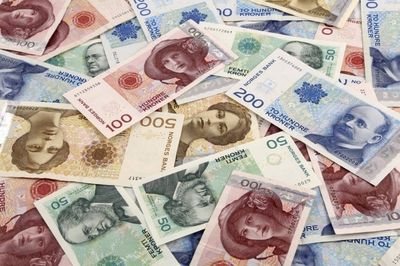
Today it is 176 thousand Norwegian kroner per year or 27 thousand US dollars. A married couple can expect an average payment of 323 thousand crowns annually, which is 50 thousand US dollars. This is not considered a very high income, but it allows you to live well with free medicine and your own housing. Confidence in receiving the required payments is ensured, so more and more people are coming here in search of a better life. The Norwegian pension fund is not only one of the largest, but also reliable in the world. It is not based on people's pension contributions, as is the case in many other states.
The basis of wealth comes from contributions from excess profits of energy companies. As a result, a high standard of living in old age is ensured by large companies, mainly oil producers. This directly justifies the ownership of resources on the territory of the state by citizens.
Pension in France
The French pension system is based on two principles: “pension savings insurance” (the pension is paid from the funds that a person saves during his working life) and “solidarity” (the pension is paid from contributions from working fellow citizens).
Individuals in liberal professions and small entrepreneurs pay 16.35% to the pension fund. Most employees pay the same amount, with the employer contributing half.
The pension in France is 50% of the average salary calculated over the last eleven working years.
Recently, the French government, represented by Prime Minister Jean-Marc Ayrault, presented a version of pension reform. This is the third pension reform in the last decade. The reform is aimed at reducing the pension system deficit (7 billion euros). Moreover, according to forecasts, in 2020 the deficit will be 20.7 billion euros. But the system is likely to balance out by 2040 thanks to the current rise in the birth rate.
In 2010, N. Sarkozy raised the retirement age from 60 to 62 years, which caused demonstrations and strikes. The trade unions promised the current president a similar wave of protests. Business managed to avoid direct tax increases and achieve a gradual increase in contributions. The rate of the main tax that replenishes the pension fund is today only 7.5% for the working population. According to the Ayrault reform, the increase in contributions over the next 4 years will lead to a small overall increase (0.3 percentage points, or 4.5 euros per month for an employee with the minimum wage) by 2020. Starting from 2020, it is planned to introduce allowances for employees who worked in heavy industries.
Hollande keeps his election promise: despite the latest demands of the European Union, the French government did not raise the retirement age. True, the Ayrault reform changes the length of service required to receive a full pension: now you need to work for 41.5 years, and by 2035 it will take 43 years. The new rules will affect those born after 1973. As a result, the government will still force the majority of citizens to work even after 62 years of age.
Pension for foreign citizens
Migrants can receive a pension legally, but this requires official status from the start of their working career. Otherwise it cannot be counted. At what age do foreigners retire in Norway? The same rules are established as for the rest - 67 years.
It is not necessary to have a residence permit or other documents for permanent residence. It is enough to work for at least 3 years officially on a work visa. In this case, a basic pension is assigned. If the foreigner has European Union citizenship, the minimum period of work is 1 year.
If you have a permanent residence permit, you can participate in the pension fund program. This allows you to make deductions to increase future payments. Those who have worked the required 40 years receive payments on the same basis as native residents. There is not much difference in origin. It is important that the work is carried out in Norway and is official.
We recommend these articles:
What is the minimum pension in Armenia?
What is the retirement age in Estonia?
Features of life of pensioners
Due to the fact that the retirement age in Norway is set quite high, citizens strive to create additional savings during the working period. This provides a level of comfort, allows you to count on additional funds and feel safe.
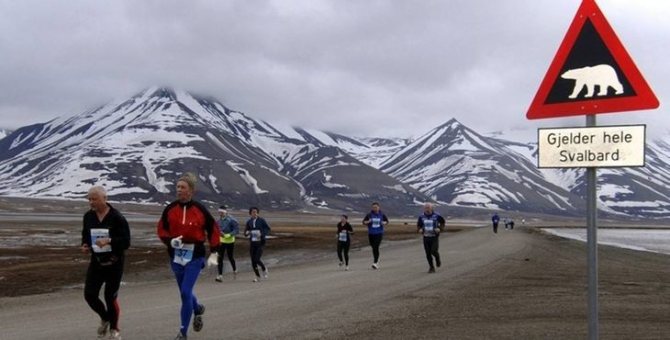
The average life expectancy in the country is about 82 years. There are more and more pensioners in the Norwegian states, so it is possible to increase the retirement age to 70 years. Since 2017, the government has not made investments in high-yield stocks, as this is associated with high risks. As a result, citizens' savings remain protected.
How do pensioners live in Norway? The country is recognized as one of the best in terms of quality of life for those over 60 years old. Elderly people have sufficient income, can successfully find a job after retirement, and receive quality medical care and regular diagnostics. Those who have worked for the required period of 40 years and receive bonuses are in a winning position.
Thus, Norway has a high pension provision, which allows you to maintain a decent standard of living in old age. It is ensured by the long labor of the citizens themselves and by state policy. The last thing to worry about is preserving the pension system.
For those over 60. Norway is the best place for a prosperous old age
October 25, 2014, 10:00
Author: Natalia Mechetnaya
A successful economy, powerful social programs, high-quality medicine and, of course, oil provide the elderly people of Norway with the happiest old age on the planet.
The best place for older people to live is in Norway. Recently, this country was recognized as the most favorable in terms of quality of life for those over 60, according to the results of the Global AgeWatch Index 2014, compiled by the international charity organization HelpAge International with the support of the UN. The researchers assessed many factors, such as employment opportunities in old age, income levels, social security, access to quality health care and life expectancy in the country.
Norway's closest neighbor, Sweden, is in second place in the ranking; Switzerland closes the top three. At the same time, Ukraine ranks only 82nd in the list, which is the worst indicator for Eastern Europe, and Russia ranks 65th in the ranking.
“It's a combination of good management of natural resources coupled with good planning,” says Gustavo Toshiyaki, a Norwegian economist and sociologist, explaining the success of his small country of just 5 million people, which has become a haven for retirees.
Humanity is doomed to pay more and more attention to the standard of living of older people and expand their opportunities, the compilers of the rating are convinced. Indeed, by 2050, according to forecasts by researchers from HelpAge International, people over 60 years of age will make up 21% of the planet's population. So far there are 12% of them.
In Norway, those who celebrated their 60th birthday are almost 22%, and in the middle of the century they will already be 28%. Why not, if the welfare of the elderly there is ensured by the Norwegian State Pension Fund, which is one of the world's largest sovereign wealth funds. And it is formed not from pension contributions, but from oil windfalls of local energy companies: old age for Norwegians is guaranteed and provided by oil. However, both men and women retire here quite late - at 67 years old.
Well-deserved paradise
“I still have to work at least 20 years before the sweet life,” smiles 47-year-old Norwegian insurance specialist Trond Stoversten.
He explains the high quality of life of people of the third age in his country primarily by the national trait of his compatriots - hard work. Stoversten emphasizes that his fellow citizens earn a decent life in old age through many years of hard work - having reached her 67th birthday, his mother, who had worked as a nurse all her life, ended her career several years ago.
The high quality of life of people of the third age in Norway is explained primarily by hard work
In Europe as a whole, retirement ages tend to be lower: for example, in Austria and the UK, men and women retire at ages 65 and 60 respectively, and in France, the recent increase in the retirement age from 60 to 62 since 2016 has seen numerous protest actions.
However, Norwegians do not complain about late retirement, but are simply waiting in the wings to finally enjoy, as Stoversten puts it, the fullness of life.
“My 78-year-old father plays the guitar. He and his friends created their own group,” says the insurance agent. In the summer, his parents go out on their big boat and go fishing, and they steer the boat themselves.
People who once built a country with a strong economy deserve a high quality of life in old age and the respect of others, says 34-year-old Norwegian resident Mika Leroy.
“If even the prisoners here get good food, why should we skimp on those who made our country?” — Leroy asks a rhetorical question.
The minimum pension in Norway is 176 thousand Norwegian kroner per year - about $27 thousand, and for a married couple who have reached their 67th birthday, the minimum old-age benefit is 323 thousand kroner per year (about $50 thousand). Leroy believes that these amounts are not too large compared to local prices, but he is confident that, having his own home and taking advantage of free medical care, he can live comfortably on this money. However, most Norwegian pensioners receive significantly more.
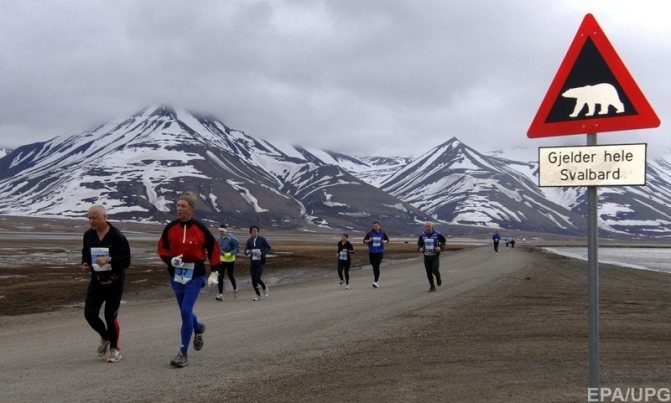
Enjoying old age: Norwegian older people lead an active lifestyle: working, playing sports and traveling
Norway, with a GDP per capita of $55,400, is one of the richest countries in the world. This economic indicator is higher than even in the United States - $52,800, and in Germany, the economic locomotive of the European Union, GDP per capita is $39,500. Norway has developed high technologies, and also makes good money from the sale of natural resources - oil, gas, forests and fish farming.
Also in Norway, one of the advantages of their country is the fact that it is not a member of the EU and therefore, in the event of a crisis, it is not obliged to spend money on saving the economies of Greece or Spain.
The relatively low costs of the army make it possible to expand the social sector budget. Thus, Norway spends 1.4% of GDP on military spending. By comparison, the UK is 2.5% and the US is 4.35%. At the same time, Norwegian pensions cost 4.5% of GDP, while in Britain they cost 0.44%.
High pension provision allows middle-aged Norwegians not only to live for their own pleasure, but also, after finishing work, to leave to live in other countries that are cheaper and, most importantly, warmer.
“You will find especially many Norwegians in Spain,” explains Leroy. And Stoversten admits that, upon retirement, he plans to first travel and then buy a house in some warm country - for example, in Greece or Cyprus.
Someday he, like now his recently retired mother and other elderly compatriots, will be provided with a dignified old age by the Norwegian State Pension Fund, and this is the largest fund in Europe. It is even larger than the California Public Employees' Retirement Fund (CalPERS), the largest public pension fund in the United States. It is also called the oil fund, as it is formed from excess profits from the sale of oil.
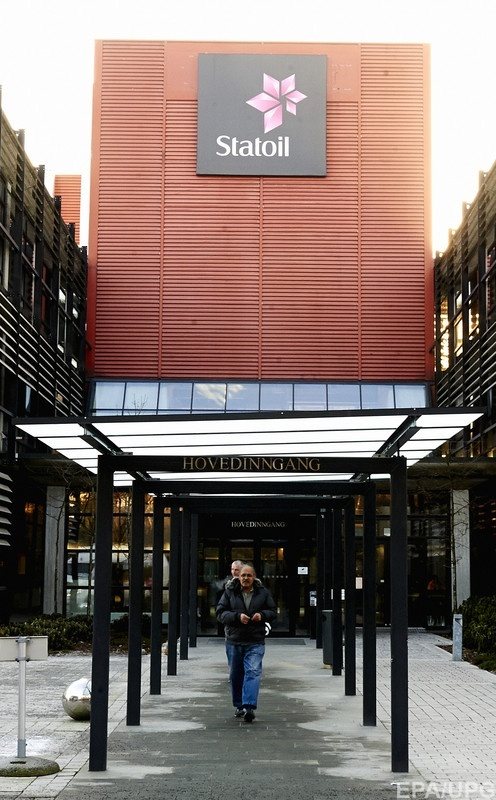
Norwegian state oil company Statoil
The fund invests Norway's oil money around the world, buying securities and real estate. Norway's Petroleum Fund is managed by a unit of the central bank, Norges Bank Investment Management (NBIM), which acts on behalf of the country's Ministry of Finance.
According to forecasts by the Norwegian Ministry of Finance, by the end of 2014 the volume of the fund's investment portfolio will reach 4.3 trillion Norwegian kroner, or $717 billion. This same fund provides a high degree of economic security for the social protection of the country, analysts from Global AgeWatch believe.
Warm country
Norway would not be the best place to live for older people without the overall high standard of living and the government's attention to every member of society. For example, in the ranking of the happiest countries of the UN (The UN World Happiness Report), Norway ranks second, placed immediately after another prosperous Northern European country - Denmark. Since 2009, Norway has topped the list of countries in terms of the human development index - an indicator of living standards, literacy, education, and longevity, calculated by UN specialists for each individual country.
“Norway does not look at older people as a problem,” -
Gustavo Toshiyaki , economist and sociologist
In addition, there is almost no crime in Norway: there are 2.2 intentional murders per 100 thousand population, while in the USA this figure is equal 4.7.
“Norway does not look at older people as a problem,” says Toshiyaki, the last component of a happy life for old people in his country. He also emphasizes that the proportion of working and active Norwegians over 60 is extremely high.
There are comfortable nursing homes here, but the country's social policy is aimed at ensuring that people can live in their own homes for as long as possible. The housing of elderly people is equipped with special handrails and mobile systems, and they are also provided with day care.
Old people also enjoy a large number of various small benefits - for example, they can use taxi services at the expense of the state, Stoversten talks about the benefits of pensioners. And, of course, they call a doctor to your home for free.
However, even in their retirement paradise, Norwegians see drawbacks. For example, you often have to wait quite a long time to get medical help. If a person's condition is not life-threatening, he can wait about a year for his turn for free surgery, Leroy says.
Secondly, he continues, the prosperity here also has a side effect: it attracts migrants. Moreover, representatives of other cultures do not have the same feeling of gratitude and respect that native Norwegians feel for local elders, he complains.

Leroy has traveled a lot and honestly admits that compared to other countries, his cold homeland is indeed very friendly and warm towards older people. “But I and many of my compatriots are confident that we can make it even better,” he says simply.
The material was published in No. 23 of the New Time magazine dated October 17, 2014

